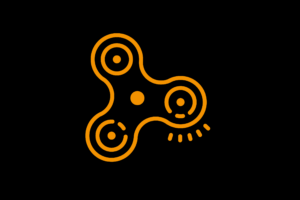When you close your eyes, do you know where your arms and legs are without looking at them? That’s because of your sense of proprioception. This sense helps your body know where it is in space and how it’s moving, even when you can’t see it.
Inside your muscles, joints, and tendons, there are tiny sensors that act like detectives. They’re called proprioceptors, and their job is to send messages to your brain about your body’s position and movements. Think of them as messengers that tell your brain what your body is doing.
Let’s say you’re playing a game of catch with a friend. Your brain needs to know exactly where your arm is and how much force to use to throw the ball. That’s when your proprioceptive sense comes into action. They tell your brain the position of your arm, the amount of strength needed, and even the angle at which to throw the ball.
The proprioceptive sense also helps you with balance and coordination. Have you ever walked on a balance beam or a narrow ledge? It’s a bit challenging to stay steady, right? Well, your body awareness sense is working hard to help you. It’s telling your brain the position of your feet, the adjustments your body needs to make, and how much pressure to put on each step.
Imagine playing a musical instrument like a guitar or piano. Your fingers need to move in just the right way to hit the right notes. That’s where body awareness comes in. It helps you feel where your fingers are, how they should move, and how much pressure to apply to create the sound you want.
Proprioception and autistic people
Just like the other senses, everyone has quite varied levels of body awareness But they can be even more varied for autistic people.
Some autistic people might have a higher sensitivity to proprioception. They might be very aware of their body’s movements and positions. They might be really good at sports that require precise movements, like gymnastics or dance.
On the other hand, some autistic people may have a lower sensitivity to proprioception. It means they might not feel their body’s position and movements as strongly. They might need more feedback and information from their body to understand how they’re moving. They might need to touch things or press against objects to get a better sense of their body’s position. They might need more practice and guidance to learn new movements.
Proprioception and you
Think about your own sense of proprioception. There may be different activities that are helpful for you, depending on your sensitivity.
Higher sensitivity
- Ask for space from people if you need it
- Stand at the start/ end of a line when lining up
Lower sensitivity
- Move objects out of the way so it is easier to stand (including moving furniture to edges of the room if you can)
- Consider using a weighted blanket, or something else that offers deep pressure like a heavy backpack.
- Muscle work is great for giving proprioceptive input. Try hanging from a bar, exercise, weight lifting.



